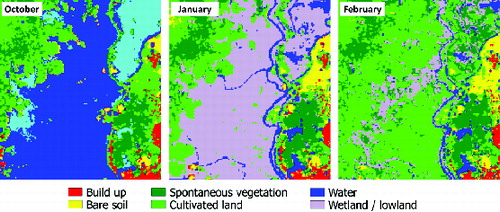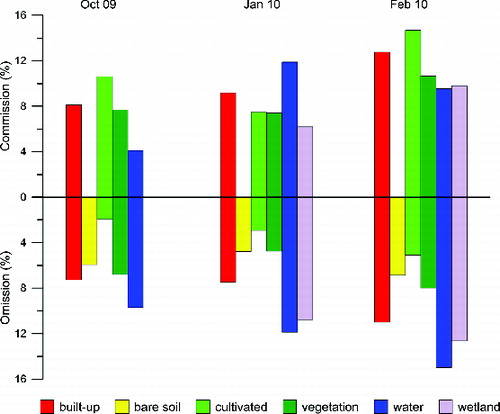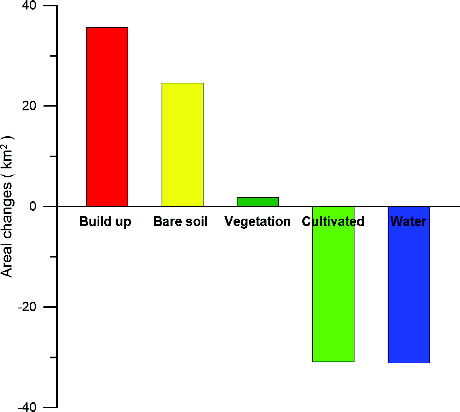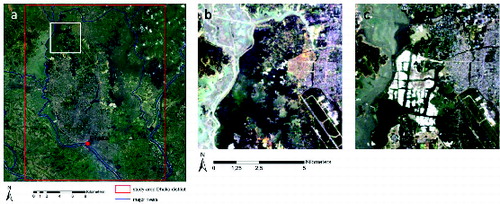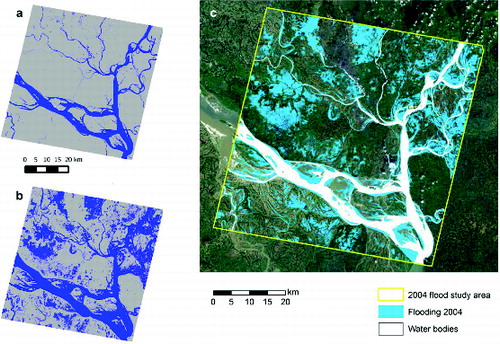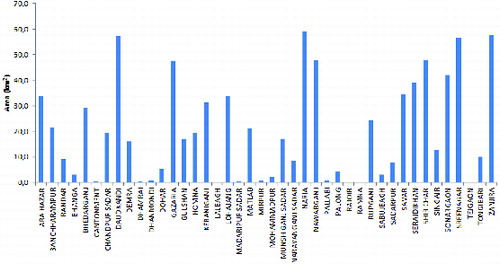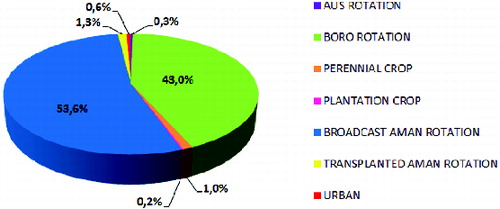Figures & data
Figure 1. Location of the study area. Dhaka district (red polygon) and July 2004 flood study area (yellow polygon).
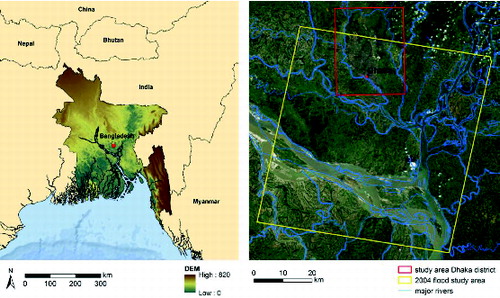
Table 1. List of the collected satellite images and their specific employment in the present work.
Table 2. Description of the informative classes adopted for land use/cover maps and training sites used for each classification.
Table 3. Example of ROI separability indexes for the classification of Landsat image acquired on October 2009. For each class-row in the table, the first line reports the separability indexes using only the six TM multispectral bands, whereas the second line shows the same indexes computed on the six multispectral bands plus the thermal band 6.
Table 4. Land use/cover change matrix (km2) between the 2000 and 2009 TM image classifications.
Figure 2. Multitemporal land use/cover maps of Dhaka: a, b, c maps were compared to quantify the urban growth; c, d, e maps were used to study the ordinary flood.

Figure 3. Ground truth points in January 2010 Landsat image; on the right, three examples extracted from the high-resolution images.
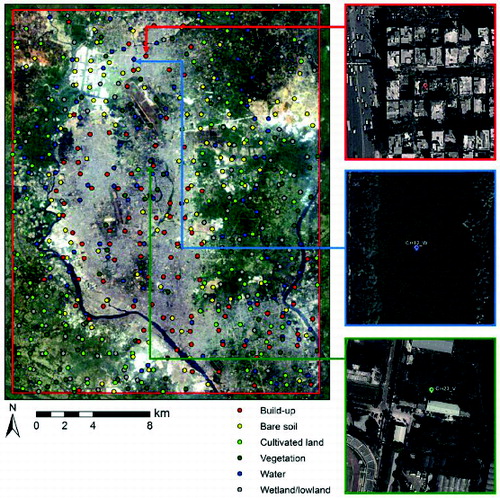
Table 5. October 2009–February 2010 land use/cover changes matrix (km2).
Figure 8. On the left, overlapping of the Water class pixels in the three Landsat images (October 2009, January 2010 and February 2010) combined in a RGB composition, in which permanent water bodies appear in white colour. On the right, the resulting permanent water bodies and flooded areas (Dhaka district).
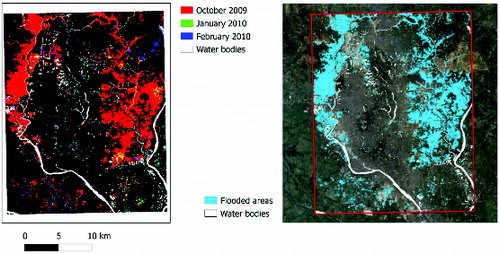
Figure 9. A portion of the Dhaka district classifications showing widespread flooding in October 2009, becoming wetland in January and cultivated land in February 2010.
